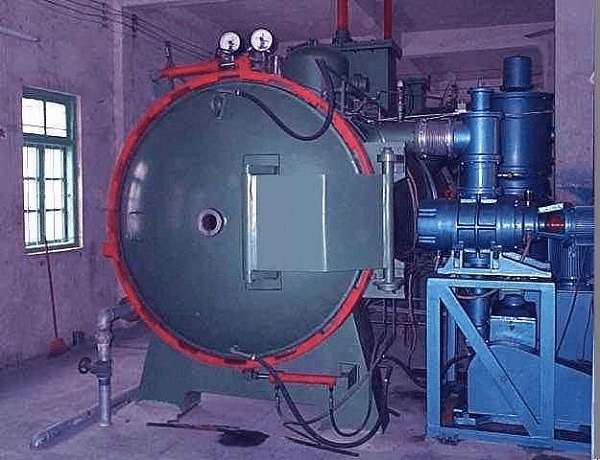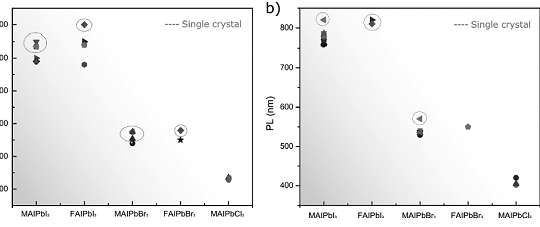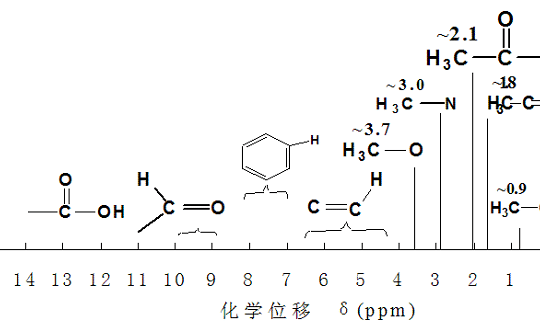introductionSteel is quenched by heating the steel to a temperature above the critical temperature Ac3 (hypo-eutectoid steel) or Ac1 (hypereutectoid steel), holding it for a period of time so as to be austenitized in whole or in part, and then cooled at a temperature greater than the critical cooling rate Rapid cooling to below the Ms (or Ms near the isothermal) martensitic (or bainite) heat treatment process. The solution treatment of materials such as aluminum alloys, copper alloys, titanium alloys, toughened glass, etc., or heat treatment processes with rapid cooling is also commonly referred to as quenching. Quenching is a common heat treatment process, mainly used to increase the hardness of the material. Usually from the quenching medium, can be divided into water quenching, oil quenching, organic quenching. With the development of science and technology, some new quenching processes have emerged.1 high-pressure air-cooled quenching methodWorkpieces in the strong inert gas flow quickly and evenly cooling, to prevent surface oxidation, to avoid cracking, reduce distortion, to ensure that the required hardness, mainly for tool steel quenching. This technology has recently progressed rapidly and the range of applications has also expanded considerably. At present, the vacuum gas quenching technology developed rapidly, and the negative pressure (<1 × 105 Pa) high flow rate gas cooling followed by gas cooling and high pressure (1 × 105 ~ 4 × 105 Pa) 10 × 105 Pa) air-cooled, ultra-high pressure (10 × 105 ~ 20 × 105 Pa) air-cooled and other new technologies not only greatly enhance the vacuum quenching ability of air-cooled, and quenched the workpiece surface brightness is good, small deformation, but also A high efficiency, energy saving, pollution-free and so on. The use of vacuum high-pressure gas-cooled quenching is the quenching and tempering of materials, the solution, aging, ion carburizing and carbonitriding of stainless steel and special alloys, as well as vacuum sintering, cooling and quenching after brazing. With 6 × 105 Pa high pressure nitrogen cooling quenching, the load can only be cooled loose, high-speed steel (W6Mo5Cr4V2) can be hardened to 70 ~ 100 mm, high alloy hot work die steel up to 25 ~ 100 mm, gold Cold work die steel (such as Cr12) up to 80 ~ 100 mm. When quenched with 10 × 10 5 Pa of high pressure nitrogen, the cooled load can be intensive, increasing the load density by about 30% to 40% over cooling of 6 × 10 5 Pa. When quenched with 20 × 10 5 Pa of ultra-high pressure nitrogen or a mixture of helium and nitrogen, the cooled loads are dense and can be bundled together. The density of 6 × 105 Pa nitrogen cooling 80% to 150%, can be cooled all high-speed steel, high alloy steel, hot work tool steel and Cr13% chromium steel and more alloy oil quenched steel, such as more Large-size 9Mn2V steel. Dual-chamber air-cooled quench furnaces with separate cooling chambers have better cooling capacity than the same type of single chamber furnaces. The 2 × 105 Pa nitrogen cooled double chamber furnace has the same cooling effect as the 4 × 105 Pa single chamber furnace. However, operating costs, low maintenance costs. As China’s basic materials industry (graphite, molybdenum, etc.) and ancillary components (motor) and other levels to be improved. Therefore, to improve the 6 × 105 Pa single-chamber high-pressure vacuum care while maintaining the development of dual-chamber pressure and high-pressure air-cooled quenching furnace more in line with China’s national conditions.Figure 1 high-pressure air-cooled vacuum furnace2 strong quenching methodConventional quenching is usually with oil, water or polymer solution cooling, and strong quenching rule with water or low concentrations of salt water. Strong quenching is characterized by extremely fast cooling, without having to worry about excessive distortion of steel and cracking. Conventional quench cooling to the quenching temperature, the steel surface tension or low stress state, and strong quenching in the middle of cooling, the workpiece heart is still in the hot state to stop cooling, so that the formation of surface compressive stress. Under the severe quenching condition, the supercooled austenite on the surface of the steel is subjected to compressive stress of 1200 MPa when the cooling rate of the martensitic transformation zone is higher than 30 ℃ / s, so that the yield strength of the steel after quenching is increased by at least 25%.Principle: Steel from austenitizing temperature quenching, the temperature difference between the surface and the heart will lead to internal stress. Phase change of the specific volume of phase change and phase change plastic will also cause additional phase transformation stress. If the thermal stress and phase transition stress superposition, that is, the overall stress exceeds the yield strength of the material will be plastic deformation occurs; if the stress exceeds the tensile strength of hot steel will form a quenching crack. During intensive quenching, the residual stress caused by the phase change plasticity and the residual stress increase due to the specific volume change of austenite-martensite transformation. In the intense cooling, the workpiece surface immediately cooled to the bath temperature, the heart temperature almost unchanged. Rapid cooling causes a high tensile stress that shrinks the surface layer and is balanced by the heart stress. The increase of temperature gradient increases the tensile stress caused by the initial martensitic transformation, while the increase of the martensite transformation start temperature Ms will cause the surface layer to expand due to the phase transition plasticity, the surface tensile stress will be significantly reduced and transformed into compressive stress, Surface compressive stress is proportional to the amount of surface martensite produced. This surface compressive stress determines whether the heart undergoes martensitic transformation under compressive conditions or, on further cooling, reverses the surface tensile stress. If the martensitic transformation of the heart volume expansion is large enough, and the surface martensite is very hard and brittle, it will make the surface layer due to stress reversal rupture. To this end, the steel surface should appear compressive stress and heart martensitic transformation should occur as late as possible.Strong quenching test and steel quenching performance: The strong quenching method has the advantage of forming compressive stress in the surface, reducing the risk of cracking and improve the hardness and strength. Surface formation of 100% martensite, the steel will be given the largest hardened layer, it can replace the more expensive steel carbon steel, a strong quenching can also promote uniform mechanical properties of steel and produce the smallest distortion of the workpiece . Parts after quenching, the service life under alternating load can be increased by an order of magnitude. [1]Figure 2 strong quenching crack formation probability and cooling rate relationship3 water-air mixture cooling methodBy adjusting the pressure of water and air and the distance between the atomizing nozzle and the surface of the workpiece, the cooling capacity of the water-air mixture can be varied and the cooling can be uniform. Production practice shows that the use of the law on the shape of complex carbon steel or alloy steel parts induction hardening surface hardening, which can effectively prevent the generation of quenching cracks.Figure 3 water-air mixture4 boiling water quenching methodUsing 100 ℃ boiling water cooling, can get a better hardening effect, for quenching or normalizing steel. At present, this technology has been successfully applied to the ductile iron quenching. Taking aluminum alloy as an example: According to the current heat treatment specifications for aluminum alloy forgings and forgings, the quenching water temperature is generally controlled below 60 ° C, the quenching water temperature is low, the cooling speed is high, and a large residual stress after quenching occurs. In the final machining, the internal stress is out of balance due to the inconsistency of the surface shape and size, resulting in the release of residual stress, resulting in deformed, bent, oval and other deformed parts of the machined part becoming irreversible final wastes with serious loss . For example: propeller, compressor blades and other aluminum alloy forging deformation after machining obvious, resulting in parts size tolerance. Quenching water temperature increased from room temperature (30-40 ℃) to boiling water (90-100 ℃) temperature, the average forging residual stress decreased by about 50%. [2]Figure 4 boiling water quenching diagram5 hot oil quenching methodThe use of hot quenching oil, so that the workpiece before further cooling at a temperature equal to or near the temperature of Ms point in order to minimize the temperature difference, can effectively prevent quenching the workpiece distortion and cracking. The small size of the alloy tool steel die cold 160 ~ 200 ℃ in hot oil quenching, can effectively reduce distortion and avoid cracking.Figure 5 hot oil quenching diagram6 Cryogenic treatment methodThe quenched workpiece is continuously cooled from room temperature to a lower temperature so that the retained austenite continues to be transformed into martensite, the purpose of which is to improve the hardness and abrasion resistance of the steel, improve the structural stability and the dimensional stability of the workpiece, and effectively Improve tool life.Cryogenic treatment is liquid nitrogen as a cooling medium for material processing methods. Cryogenic treatment technology was first applied to the wear tools, mold tool materials, and later extended to alloy steel, carbide, etc., using this method can change the internal structure of metal materials, thereby improving the mechanical properties and processing properties, which is currently One of the latest toughening processes. Cryogenic treatment (Cryogenictreatment), also known as ultra-low temperature treatment, generally refers to the material below -130 ℃ for processing to improve the overall performance of the material. As early as 100 years ago, people began to cold treatment applied to watch parts, found to improve the strength, wear resistance, dimensional stability and service life. Cryogenic treatment is a new technology developed on the basis of ordinary cold treatment in the 1960s. Compared with the conventional cold treatment, cryogenic treatment can further improve the mechanical properties and stability of the material, and has a broader application prospect.Cryogenic treatment mechanism: After cryogenic treatment, the residual austenite in the internal structure of the metal material (mainly mold material) is transformed to martensite, and the precipitated carbide is also precipitated in the martensite, so that the martensite can be eliminated In the residual stress, but also enhance the martensite matrix, so its hardness and wear resistance also will increase. The reason for the increase in hardness is due to the transformation of part of the retained austenite into martensite. The increase in toughness is due to the dispersion and small η-Fe3C precipitation. At the same time, the carbon content of the martensite decreases and the lattice distortion decreases, Plasticity improvement.Cryogenic treatment equipment mainly consists of liquid nitrogen tank, liquid nitrogen transmission system, deep cold box and control system. In the application, cryogenic treatment is repeated several times. Typical processes such as: 1120 ℃ oil quenching + -196 ℃ × 1h (2-4) deep cryogenic treatment +200 ℃ × 2h tempering. After the treatment of the organization there has been the transformation of austenite, but also precipitated from the quenched martensite dispersion of highly coherent relationship with the matrix of ultrafine carbides, after subsequent low temperature tempering at 200 ℃, the growth of ultrafine carbides Dispersed ε carbides, the number and dispersion significantly increased. The cryogenic treatment is repeated a number of times. On the one hand, the superfine carbides are precipitated from the martensite transformed from the retained austenite at the time of the previous cryogenic cooling. On the other hand, fine carbides continue to be precipitated in the quenched martensite. Repeated process can make the matrix compressive strength, yield strength and impact toughness increased, improve the toughness of steel, while making the impact wear resistance was significantly improved.Figure 6 cryogenic treatment device schematicSome of the workpiece on the strict size requirements, does not allow processing due to thermal stress caused by excessive deformation, cryogenic treatment should be controlled cooling rate. In addition, in order to ensure the uniformity of the temperature field inside the equipment and reduce the temperature fluctuation, the design of the cryogenic treatment system should take into account the system temperature control accuracy and the rationality of the flow field arrangement. In the system design should also pay attention to meet the less energy consumption, high efficiency, easy operation and other requirements. These are the current development trend of cryogenic treatment system. In addition, some developing refrigeration systems whose refrigeration temperature extends from room temperature to low temperature are also expected to develop into liquid-free cryogenic treatment systems with the decrease of their minimum temperature and the improvement of refrigeration efficiency. [3]References:[1]樊东黎. 强烈淬火——一种新的强化钢的热处理方法[J]. 热处理, 2005, 20(4): 1-3[2]宋微, 郝冬梅, 王成江. 沸水淬火对铝合金锻件组织与机械性能的影响[J]. 铝加工, 2002, 25(2): 1-3[3]夏雨亮, 金滔, 汤珂. 深冷处理工艺及设备的发展现状和展望[J]. 低温与特气, 2007, 25(1): 1-3
출처 : Meeyou Carbide



